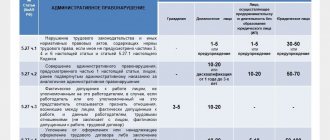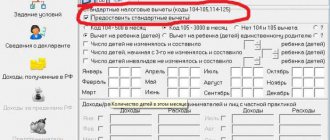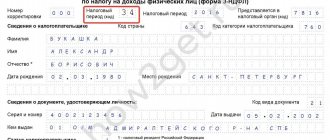The tax base
The current version of Article 210 of the Tax Code of the Russian Federation states: the personal income tax base must be calculated separately for each rate.
Plus, the dividend base should be determined separately. The rules will change in 2022 and beyond. Separate bases will have to be created for several types of income (and not just for dividends).
Thus, the law under comment added a new clause 2.1 to Article 210 of the Tax Code of the Russian Federation. According to it, with regard to income received by residents of the Russian Federation and taxed at a rate of 13% (or 15%), independent tax bases must be determined:
- Based on income from equity participation.
- Based on the winnings of participants in gambling and lotteries.
- On transactions with securities and derivative financial instruments. Investment deductions are applied in the amount of a positive financial result from the sale (redemption) of securities that were owned by an individual for more than three years (subclause 1, clause 1, Article 219.1 of the Tax Code of the Russian Federation), as well as deductions provided for in Article 220.1 of the Tax Code of the Russian Federation.
- For repo transactions, the object of which is securities.
- For securities lending transactions.
- Based on the income of the participants of the investment partnership. Deductions are applied when carrying forward losses from participation in an investment partnership to future periods (Article 220.2 of the Tax Code of the Russian Federation).
- For transactions with securities and derivative financial instruments recorded in an individual investment account. Deductions are applied in the amount of the financial result for such operations (subclause 3, clause 1, article 219.1 of the Tax Code of the Russian Federation), as well as deductions provided for in article 220.1 of the Tax Code of the Russian Federation.
- In the form of amounts of profit (including fixed) of a controlled foreign company.
- For all other types of income subject to the personal income tax rate of 13% (or 15%). Deductions are applied (except for some property and investment ones) provided for in Articles 218 - 221 of the Tax Code.
In 2022, the term “basic tax base” will appear. These are incomes that appear in the above list at number 9 (that is, those that are not included in other databases). Examples are salary, bonuses, vacation pay and sick leave.
Calculate salary and vacation pay taking into account all current indicators
In what situations does the personal income tax rate of 35% apply?
The personal income tax rate of 35% is established for the following income:
1. Winnings and prizes
Taxation of winnings and prizes received at competitions, events to attract consumer demand for certain types of advertised goods and in games is carried out at a tax rate of 35%. The rate is applied to income, which is calculated as the value of the winnings received minus 4,000 rubles. (Winnings starting from RUB 4,000 are subject to taxation in the case of promotions and competitions). If lottery winnings are considered, with the exception of cases when the lottery is held for advertising, this income is subject to personal income tax at a rate of 13% (see paragraph 28 of article 217 of the Tax Code of the Russian Federation, Letter of the Federal Tax Service of Russia No. 04-1-03/588 dated November 1 2005).
For example, a milk producer holds a competition among customers “Collect more sour cream caps and get a prize.” This event is held for advertising purposes and advertises certain products, in this case the advertiser’s sour cream. In this case, prizes will be taxed at a rate of 35% of the prize amount, with the exception of RUB 4,000. If the same company holds a competition among buyers for the best photo with a jar of sour cream or a competition for the best proposal to change its logo, this event will not be considered advertising, and therefore the winning amount will be taxed at a rate of 13% of the full value of the winning, without deduction amount of 4000 rubles.
2. Income in the form of interest on a bank deposit
In general, the bank will calculate personal income tax at a rate of 35% in the case when the amount of accrued interest exceeds the amount of interest calculated in accordance with paragraphs 1, 3, 4 of Art. 214.2, paragraph 2 of Art. 224 of the Tax Code of the Russian Federation, depending on the currency of the deposit:
- If the deposit is in rubles - interest accrued based on the BR refinancing rate, valid during the interest calculation period and increased by 5%, taking into account the fact that in the period from December 15, 2014 to December 31, 2015, the refinancing rate increases by 10 %;
- If the deposit is in foreign currency - interest is based on the rate of 9% per annum.
According to BR Directive No. 3894-U dated December 11, 2015 and BR Information dated October 27, 2022, the value of the Bank of Russia refinancing rate from January 1, 2016 was equal to the value of the BR key rate.
From October 30, 2022, its value is 8.25%. Since the value of the refinancing rate is not a constant value, a situation may occur when a change in the refinancing rate during the validity period of the deposit agreement will lead to an excess in interest. However, if on the date of conclusion of the agreement such an excess was not observed, the amount of interest under the agreement also did not change and, in addition, no more than 3 years have passed since the conclusion of the agreement, in accordance with clause 2 of Art. 214.2 of the Tax Code of the Russian Federation, interest on ruble deposits will not be taken into account as income.
Example of calculation for ruble deposits The depositor entered into a deposit agreement with a Russian bank. The interest rate at the time of conclusion of the agreement was 17% per annum. As we discussed above, in the period from December 15, 2014 to December 31, 2015, the regular refinancing rate of 8.25% increases by 10% and becomes equal to 18.25%. The interest rate under the agreement is 17%, which is less than 18.25%, therefore, the amount of interest received is not subject to personal income tax. Starting from October 30, 2022, the refinancing rate is 8.25%. Accordingly, if a depositor opens a deposit with the same interest rate of 17% per annum, the difference between the amount of accrued interest and the BR refinancing rate increased by 5% will be equal to 17% - (8.25% + 5%) = 3.75%. This amount of interest on the deposit amount is interest income. A personal income tax rate of 35% will be calculated on the amount of this income.
Example of calculation for deposits in foreign currency The depositor made a deposit in US dollars in the amount of 8000. The term of the agreement is 200 days, the interest rate under the deposit agreement is 9.5% per annum. Let's calculate the tax base using the formula:
$8000 * (9.5% - 9%) : 365 days * 200 days = $17.53
Personal income tax will be calculated using the formula $17.53 * 35% = $6.1. This amount is paid in rubles at the Bank of Russia exchange rate on the date of accrual.
Speaking about what rates of personal income tax (NDFL) are applied in various situations, it is also necessary to familiarize yourself with the question of whether income from a deposit in a foreign bank is subject to taxation.
3. Income in the form of interest savings when receiving a loan (credit) from organizations and individual entrepreneurs
Income received in the form of savings on interest in accordance with clause 2 of Art. 212 of the Tax Code of the Russian Federation are taxed at a tax rate of 35% (clause 2 of Article 224 of the Tax Code of the Russian Federation) in the following cases:
- If the loan was provided in rubles, and the amount of interest for the use of borrowed funds, calculated on the basis of 2/3 of the BR refinancing rate, in effect on the date of actual receipt of income, exceeded the amount of interest under the agreement. The amount of savings is considered to be the excess of the calculated amount of interest over the actual amount of interest under the contract. In this case, the date of actual receipt of income, according to paragraphs. 7 clause 1 art. 223 of the Tax Code of the Russian Federation, the last day of each month is considered for the entire period for which the loan was taken.
An example of calculating income tax in the form of savings on interest in rubles: The taxpayer took out an interest-free loan for one month (30 calendar days) in the amount of 50,000 rubles. The loan was provided on August 28, 2017 and must be repaid in a lump sum. Let's calculate the amount of material benefit subject to personal income tax at a rate of 35%. It is necessary to take into account the value of the BR refinancing rate, which changed during this period. According to the Bank of Russia Information dated June 16, 2022, from June 19, 2022 to September 17, 2022, it was equal to 9%. From September 18, 2022 to October 29, 2022, the refinancing rate became 8.5% (BR Information dated September 15, 2017). Since the date of actual receipt of income is considered the last day of each month, and in September the date of receipt of income is September 27, in August the refinancing rate is taken equal to 9%, and in September - 8.5%. Thus, we calculate the amount of material benefit on the last day of August as:
50,000 rub. * (9% * 2/3) / 365 days * 3 days = 24.65 rub. Personal income tax is taken from this amount at a rate of 35%, which will be 8.63 rubles. This amount is rounded up to 9 rubles, according to clause 6 of Art. 52 of the Tax Code of the Russian Federation.
The amount of material benefit on the last day of September will be calculated using the formula: 50,000 rubles. * (8.5% * 2/3) / 365 days * 27 days = 209.59 rub. The amount of personal income tax on material benefits in September will be equal to 35% of 209.59, that is, 73.36 rubles, which is rounded to 73 rubles. Total for 30 days the personal income tax amount will be equal to 9 + 73 = 82 rubles;
- If the borrowed funds were provided in foreign currency, the amount of savings will be considered to be the excess of the amount of interest calculated on the basis of 9% per annum over the amount of interest under the agreement.
An example of calculating income tax in the form of savings on interest in foreign currency: An employee took from an employer the amount of $17,000 on a short-term loan for 30 days at 5% per annum. Let's calculate the amount of material benefit subject to tax:
$17,000 * (9%-5%) / 365 days * 30 days = $55.89. Thus, personal income tax will be considered as 35% of the amount of material benefit, that is, from $55.89 and will be equal to $19.56. Tax is paid in rubles at the Bank of Russia exchange rate on the day of calculation.
4. Income in the form of payments to members of a credit consumer cooperative
Members of a consumer cooperative receive income in the form of fees for the use of funds and interest for the use of funds raised in the form of loans from members of agricultural credit consumer cooperatives. This income is subject to personal income tax at a rate of 35% to the extent that the fee or interest exceeds the calculated amount, which is defined as the refinancing rate of the Bank of Russia in effect during the period for which interest income was accrued, increased by 5% (clause 1 of article 214.2. 1, paragraph 2 of Article 224 of the Tax Code of the Russian Federation). In the period from December 15, 2014 to December 31, 2015, when calculating the tax base, the refinancing rate increases by 10% (clause 3 of Article 214.2.1 of the Tax Code of the Russian Federation).
In some cases, this excess may occur due to an increase in the refinancing rate of the Bank of Russia, if it occurred during the validity period of the agreement. If at the time of concluding the contract there was no excess, no more than 3 years have passed since the conclusion and the amount of interest under the contract has not been subject to change, in accordance with clause 2 of Art. 214.2.1. Tax Code of the Russian Federation, income will not be subject to personal income tax.
How can a tax agent calculate personal income tax on resident income?
You need to act as follows. Add up a person’s income for all the above bases on a cumulative basis from the beginning of the year and apply deductions. Next, select a bet.
If the sum of all bases is 5 million rubles. or less - the rate is 13%.
If the sum of all bases is more than 5 million rubles. — a combined bet consisting of two parts. The first part is 650 thousand rubles. The second part is 15% of the total income for all bases exceeding 5 million rubles. (see “From 2022, the personal income tax rate will be increased for large incomes”).
IMPORTANT
There is a special rule for income earned in 2022 and 2022. During this period, the algorithm for determining the rate should be applied not to the sum of all bases, but to each base separately. This is stated in paragraph 3 of Article 2 of the commented Law No. 372-FZ.
Calculate a “complex” salary with coefficients and bonuses Try for free
How to transfer personal income tax to a tax agent
Starting with the payment of tax for the periods of 2022, the amended procedure applies. Everything will depend on the amount of tax for each individual.
If not a single employee of a company (separate division) or employee of an individual entrepreneur has a total base that has exceeded 5 million rubles since the beginning of the year, the tax should be transferred in one payment.
If the total base of at least one employee has exceeded 5 million rubles since the beginning of the year, the tax should be transferred in two installments. The first includes personal income tax related to bases of 5 million or less. The second is personal income tax related to bases over 5 million.
REFERENCE
For tax “over 650 thousand rubles.” a separate BCC was introduced - 182 1 0100 110. This code, as well as separate BCCs for the payment of penalties and fines for late payment of the 15% tax, were approved by Order of the Ministry of Finance dated October 12, 2020 No. 236n (see “The BCC was established for the payment of personal income tax at a rate of 15 %").
How to pay personal income tax
Now tax agents will have more personal income tax payments.
Now tax agents transfer the total amount of tax to the budget. Then it will be different.
If at the time of payment of tax to the budget, the amount of tax calculated and withheld from the taxpayer, calculated on an accrual basis from the beginning of the year, is less than 650 thousand rubles or equal to 650 thousand rubles. — tax payment is made as usual, in one payment.
If at the time of payment of the tax to the budget, the amount of tax calculated and withheld from the taxpayer, calculated on an accrual basis from the beginning of the tax period, exceeded 650 thousand rubles, the tax is paid in two parts: separately, the amount of tax in the part missing up to 650 thousand rubles, attributable to to a part of the tax base up to 5 million rubles, and separately a part of the tax amount exceeding 650 thousand rubles, relating to a part of the tax base exceeding 5 million rubles.
Individuals who will pay tax on their own must also do this in different payments - from income up to 5 million and from income over 5 million rubles.
For what income does the 13% rate remain?
There are three types of income for which the combined rate of “650 thousand rubles. + 15%" does not apply regardless of the payment amount. These include:
- income from the sale of real estate (except for securities) or shares in it;
- income in the form of the value of property (except for securities) received as a gift;
- taxable insurance payments under insurance contracts and pension payments.
An important detail: the personal income tax rate of 13%, which does not depend on the amount of the specified income, is provided only for residents of the Russian Federation. This is stated in the new paragraph 1.1 of Article 224 of the Tax Code of the Russian Federation.
How to calculate personal income tax
If the amount of the tax bases that we talked about above (listed in paragraph 2.1 of Article 210 of the Tax Code) is less than 5 million, then the tax will be equal to 13% of the amount of these tax bases.
If the amount of these tax bases is more than 5 million, then the tax is calculated as follows (we quote the draft):
“...as the amount of 650 thousand rubles and an amount equal to the ad valorem tax rate established by paragraph three of paragraph 1 of Article 224 of the Tax Code (15%), a percentage share of the amount of tax bases reduced by 5 million rubles.”
Now tax agents consider personal income tax on income as a cumulative total of previously calculated tax. But this rule does not apply to income from equity participation (dividends). According to them, tax is calculated separately for each payment.
This dividend exemption is now being removed. Tax agents will calculate personal income tax for dividends using the same algorithm as for salaries.
Transferring a deduction to another tax base
An innovation has been introduced regarding personal income tax deductions. It can be applied in a situation where the resident’s main tax base has been reduced by social and standard deductions, as well as property deductions in the form of expenses for the purchase or construction of housing and interest on mortgage loans (see “The employee applied for a personal income tax deduction from the employer : what an accountant should do” and “Children’s” deductions for personal income tax: what an accountant needs to know about”).
If the amount of these deductions turns out to be more than the resident’s basic tax base, the remaining portion is not lost. It can be used when income decreases: from the sale of real estate; in the form of the value of property received as a gift (except for securities); taxable payments under insurance and pension agreements. You can transfer deductions to another base within the same tax period. In the general case, it will not be possible to take them into account next year (new edition of clause 6 of Article 210 of the Tax Code of the Russian Federation).
Innovations for non-residents
As is known, a tax resident of the Russian Federation is recognized as a person who was actually in Russia for at least 183 calendar days over the next 12 consecutive months (Clause 2 of Article 207 of the Tax Code of the Russian Federation). Moreover, in 2022, to obtain resident status, it was enough to stay in Russia for at least 90 calendar days (Federal Law No. 265-FZ dated July 31, 2020; there is no information yet about the extension of this rule to 2022). Individuals who do not meet the specified requirement for time of stay in the Russian Federation are considered tax non-residents.
Rate 30%
The personal income tax rate for non-residents will generally not change and will be 30% (clause 3 of Article 224 of the Tax Code of the Russian Federation).
But there is also an innovation. Starting from 2022, it is necessary to determine separate tax bases in relation to the following income of non-residents (new clause 2.2 of Article 210 of the Tax Code of the Russian Federation):
- For winnings received by participants in gambling and lotteries.
- On transactions with securities and derivative financial instruments.
- For repo transactions, the object of which is securities.
- For securities lending transactions.
- Based on the income of the participants of the investment partnership.
- By income: from the sale of real estate and (or) shares in it; in the form of real estate received as a gift.
- For all other types of income (including wages) subject to the personal income tax rate of 30%.
Personal income tax should be transferred in one payment for all non-resident employees of an organization (separate division) or individual entrepreneur.
Generate personal income tax payment slips with current details
Rate 13% (or 15%)
A reduced rate of 13% is now applied to some non-resident income. We are talking about the salaries of foreigners working on the basis of a patent, refugees, highly qualified specialists, etc. (Clause 3 of Article 224 of the Tax Code of the Russian Federation).
For income received in 2022 and beyond, the rule will apply.
If the cumulative total of such income from the beginning of the year is 5 million rubles. or less - the rate is 13%.
If the cumulative total from the beginning of the year is more than 5 million rubles. — the bet consists of two parts. The first part is 650 thousand rubles. The second part is 15% of the amount exceeding 5 million rubles.
The order of transfer will be as follows.
In a situation where not a single non-resident employee of a company (separate division) or individual entrepreneur has had the indicated income exceed 5 million rubles since the beginning of the year, the tax should be transferred in one payment.
If the income of at least one non-resident employee has exceeded 5 million rubles since the beginning of the year, the tax should be transferred in two installments. The first includes personal income tax related to bases of 5 million or less. The second is personal income tax related to bases over 5 million.





